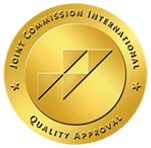Upon leaving treatment, we’ll be entering a particularly challenging time that will test our strength and our resilience. We’ll be leaving the safety of a sober living environment where drugs and alcohol are prohibited, making it impossible to pick up our drug of choice and giving us the extra security of knowing that we can’t use. We’ll be leaving the supportive staff whose guidance helped us in our initial days of sobriety. We’ll no longer have the community of others also in recovery, helping us to stay strong amidst temptation, fear and self-doubt. All the things we’re leaving behind are some of the reasons why integrating back into our regular lives can be so difficult.
Another challenge during reintegration is readjusting to our former routines. We had a temporary break from our regular schedules, our jobs, our relationships and obligations. We’ll find it hard to get reacquainted with our old lifestyles, especially now that we’re approaching them with the goal of being sober. Our old habits and routines can be triggering for us. They remind us of our drugs of choice, and we can find ourselves inundated with addictive urges and compulsions. Our addictions permeated our entire lives. Everything we see and do, everything we feel and experience can be a reminder or a trigger, bringing on increased stress and driving us to want to use again. We might have been working hard during treatment to shed our limiting beliefs and train our minds to think differently, but upon returning to our old lives, our old ways of thinking and being can come rushing back, flooding us with anxiety and pressure. Our old default coping mechanisms were our addictions, and we’ll be challenged to learn new ways of coping that are healthy and that reinforce our sobriety.
Reintegrating back into our old lives with our newfound attitudes and shifts in our perspective can cause us to question ourselves and our abilities. Can we actually stay sober? Are we strong enough? Do we have the necessary resilience? We’ll need to make lifestyle changes and adopt new habits to replace our old self-destructive ones. We’ll need to create new patterns for ourselves and hold ourselves accountable to them. The pressure of this newfound responsibility can cause us tremendous stress. We can feel anxious and overwhelmed. We can doubt our ability to stay the course. We can worry that we’re simply not strong enough. The emotional challenges to reintegration can be just as difficult as the logistical, lifestyle ones.
The most important step in recovery is the first one. Bayview Recovery is here to help support you through the entire recovery process, from intake to reintegration. Call 888-570-7154 today for more information.

 Dr. Dave Cundiff, MD, MPH (Medical Reviewer)
Dr. Dave Cundiff, MD, MPH (Medical Reviewer)






